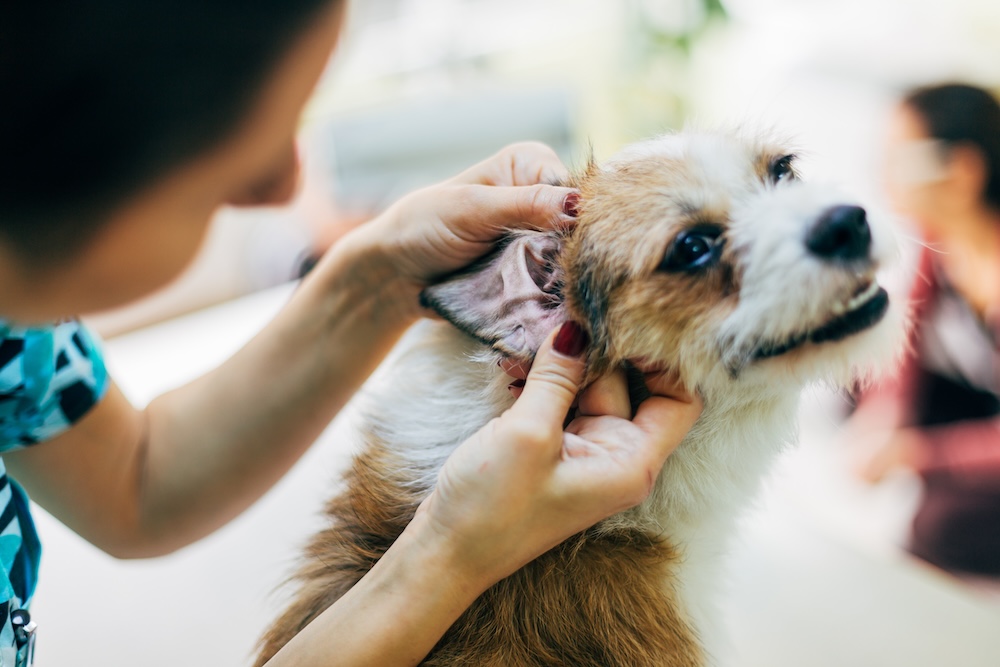At Faithful Friends Veterinary Clinic, we’re committed to helping you provide the best care for your pet, and one of the most impactful decisions you can make is having your pet spayed or neutered. Spaying and neutering are routine surgical procedures that provide a wide range of health, behavioral, and societal benefits. Not only do these procedures help prevent unwanted litters and serve to keep the pet population under control, but they also contribute to a healthier, happier life for your pet.
In this article, our vets explain the importance of spaying and neutering, their health benefits, and why this decision is a responsible choice for every pet owner.
What is Spaying and Neutering?
- Spaying is the surgical removal of the ovaries and uterus in female pets, preventing them from becoming pregnant.
- Neutering (also known as castration) is the surgical removal of the testicles in male pets, which eliminates their ability to reproduce.
Both procedures are typically performed under general anesthesia and are considered safe and routine when done by a qualified veterinarian. Recovery times are relatively short, and pets generally bounce back quickly with proper post-operative care.
The Health Benefits of Spaying and Neutering
Spaying and neutering offer more than just population control; they play a crucial role in your pet’s long-term health and well-being. These procedures can help prevent a variety of serious medical conditions and improve your pet’s quality of life. By choosing to spay or neuter your pet, you’re giving them the best chance at a healthier and longer life. Let’s explore some of the key health benefits of spaying and neutering.
1. Prevention of Certain Cancers and Diseases
One of the most significant benefits of spaying and neutering is the prevention of life-threatening cancers and diseases.
- Spaying your female pet significantly reduces the risk of uterine infections and eliminates the possibility of ovarian and uterine cancer. It also greatly reduces the risk of mammary gland cancer, which can be fatal in approximately 50% of dogs and 90% of cats.
- Neutering male pets eliminates the risk of testicular cancer and reduces the likelihood of prostate problems, such as benign prostatic hyperplasia, which can cause pain and difficulty urinating.
By spaying or neutering your pet, you are helping to prevent these serious health issues, giving your pet the chance to live a longer and healthier life.
2. Reduction in Hormone-Driven Behaviors
Spaying and neutering can positively impact your cat or dog’s behavior by reducing or eliminating hormone-driven tendencies. Some of these behaviors can be problematic and even lead to injuries.
- For female pets, spaying eliminates heat cycles, which can cause restlessness, frequent vocalization, and attract unwanted attention from males. Female pets in heat may also attempt to escape your home in search of a mate, putting them at risk of getting lost or injured.
- For male pets, neutering can reduce territorial marking, excessive mounting, and aggressive behaviors linked to testosterone. Neutered male pets are often calmer, less prone to wandering, and have reduced urges to fight with other males. Neutering also minimizes the risk of your dog or cat roaming in search of a mate, which can expose them to dangers such as traffic, predators, or confrontations with other animals.
3. Preventing Overpopulation
One of the most significant reasons for spaying and neutering is to prevent pet overpopulation. Each year, millions of unwanted pets end up in shelters or on the streets due to unplanned litters. Sadly, many of these animals are euthanized because there aren’t enough homes to accommodate them.
Spaying and neutering your pet helps reduce the number of homeless animals, decreasing the strain on shelters and improving the overall welfare of pets in your community. By making the responsible choice to spay or neuter, you’re directly contributing to the solution and helping control the pet population.
When Should You Spay or Neuter Your Pet?
The ideal time to spay or neuter your pet depends on their age, breed, and overall health. Typically, most veterinarians recommend having the procedure done around six months of age, but it’s possible to perform it earlier or later depending on your pet’s specific needs. Puppies and kittens are generally healthy enough to handle surgery by this time, and spaying or neutering before sexual maturity can prevent hormone-related behaviors from developing.
At Faithful Friends Veterinary Clinic, we’ll work with you to determine the best time to spay or neuter your pet, considering factors like breed size, growth rates, and any individual health concerns. Early spaying and neutering provide the most benefits, but older pets can still gain many advantages from the procedure.
Myths About Spaying and Neutering
There are several misconceptions about spaying and neutering that may cause hesitation among pet owners. Let’s clear up a few common myths:
- Myth: Spaying or neutering will make my pet overweight.
Fact: Spaying or neutering does not directly cause weight gain. Pets become overweight due to overfeeding and lack of exercise. With a balanced diet and regular activity, your spayed or neutered pet will maintain a healthy weight. - Myth: My female pet should have one litter before being spayed.
Fact: There’s no medical benefit to allowing a pet to have a litter before being spayed. In fact, spaying before the first heat cycle provides the best protection against certain cancers. - Myth: Spaying or neutering will change my pet’s personality.
Fact: Neutering or spaying does not change your pet’s unique personality or energy levels. It may, however, reduce behaviors driven by reproductive hormones, like roaming or aggression, making them easier to manage.
Post-Surgery Care
After your pet has been spayed or neutered, it’s important to provide proper post-operative care to ensure a smooth recovery:
- Keep your pet calm and limit their activity for the first few days to prevent excessive strain on the surgical site.
- Prevent your pet from licking or biting the incision by using an Elizabethan collar (E-collar) if necessary.
- Follow all veterinary instructions regarding pain management, wound care, and follow-up appointments.
Your pet should return to their usual self within a week or two after the procedure, but always monitor the incision for any signs of infection, such as swelling, redness, or discharge, and contact your veterinarian if you have concerns.
Questions?
Spaying and neutering are essential for your pet’s health and well-being, offering numerous benefits that range from preventing serious diseases to reducing undesirable behaviors. Not only does spaying or neutering help your pet live a longer, healthier life, but it also plays a vital role in controlling pet overpopulation and improving the welfare of animals in your community.
At Faithful Friends Veterinary Clinic, we’re dedicated to providing compassionate and expert care for your pet. If you have any questions about the spaying or neutering process, or if you’re ready to schedule your pet’s procedure, contact us today. Together, we can ensure your pet stays healthy, happy, and protected!




